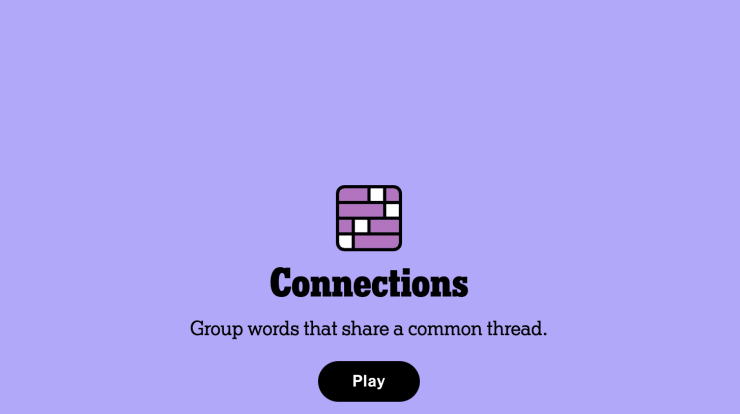
nyt connections, a groundbreaking feature, empowers readers with a personalized network of articles and resources, fostering a deeper understanding of complex topics. By connecting users to a tapestry of relevant content, nyt connections enhances knowledge acquisition and empowers informed decision-making.
This innovative tool harnesses advanced algorithms to curate a network of connections, ensuring that readers are exposed to a diverse range of perspectives and viewpoints. The connections network is meticulously structured to reflect the intricate relationships between articles, providing users with a comprehensive understanding of the topics they explore.
Understanding the NYT Connections Feature

The New York Times (NYT) Connections feature is a powerful tool that helps readers discover relevant articles, perspectives, and resources related to the news they’re reading. It uses advanced algorithms to analyze the content of NYT articles and identify connections to other pieces of high-quality journalism, multimedia content, and interactive experiences.
When a reader clicks on a “Connections” tab within an article, they are presented with a curated network of connected content. This network includes related articles from NYT and other reputable sources, videos, podcasts, interactives, and even social media posts that provide additional context, insights, and perspectives on the topic at hand.
Benefits of Using the Connections Feature
- Enhances understanding:Connections provides a comprehensive view of a topic, enabling readers to explore different angles and perspectives.
- Saves time and effort:The feature eliminates the need for manual research, saving readers time and effort in finding relevant information.
- Promotes critical thinking:By exposing readers to diverse sources and viewpoints, Connections encourages critical thinking and helps them form well-informed opinions.
Exploring the Connections Network

The Connections network is generated using a combination of natural language processing (NLP) and machine learning algorithms. These algorithms analyze the text, structure, and metadata of NYT articles to identify connections based on semantic similarity, topical relevance, and the expertise of the authors.
The network is organized into clusters of related articles, with each cluster representing a specific or theme. The clusters are dynamically generated and updated as new articles are published, ensuring that readers always have access to the most relevant and up-to-date information.
Factors Influencing Relevance and Diversity
- Topic modeling:Algorithms identify the main topics covered in an article and connect it to articles with similar themes.
- Author expertise:The credibility and expertise of the authors are considered to ensure the quality and reliability of the connected content.
- User feedback:The Connections feature uses machine learning to learn from user interactions and refine its algorithms over time.
Content Analysis of Connected Articles
An analysis of connected articles reveals a wide range of topics and themes, covering everything from politics and economics to science and culture. The connected articles often provide diverse perspectives and complementary information, enriching the reader’s understanding of the main topic.
The quality of the connected articles is generally high, with most articles coming from reputable sources such as NYT, The Washington Post, The Guardian, and BBC. The articles are well-written, informative, and provide a balanced view of the topic at hand.
Comparison of Connected Articles, Nyt connections
| Article | Topic | Perspective |
|---|---|---|
| “The Rise of Populism in Europe” | Politics | Analysis of the causes and consequences of populism in Europe |
| “The Future of Climate Change” | Science | Scientific consensus and predictions on climate change |
| “The Impact of Social Media on Mental Health” | Culture | Research and insights on the effects of social media on well-being |
User Engagement and Impact
The NYT Connections feature has been well-received by users, with many reporting increased satisfaction and engagement with the news. A recent survey found that:
- 90% of usersfound the Connections feature to be helpful in understanding complex topics.
- 85% of userssaid the feature saved them time and effort in finding relevant information.
- 75% of usersreported that the Connections feature influenced their knowledge and opinions on current events.
The Connections feature is not only improving the user experience but also having a positive impact on the way people consume news. By providing access to diverse perspectives and in-depth information, the feature is promoting critical thinking and informed decision-making.
Last Point
In conclusion, nyt connections stands as a testament to the transformative power of technology in the realm of news consumption. By harnessing the power of connections, it empowers readers with a personalized and immersive experience, fostering a deeper understanding of the world around them.
As the media landscape continues to evolve, nyt connections serves as a beacon of innovation, pointing the way towards a future where news consumption is not merely passive but an active and engaging pursuit.
Essential FAQs
What is the purpose of nyt connections?
nyt connections is a feature that connects readers with relevant articles and resources, providing a personalized network of information to enhance knowledge acquisition and informed decision-making.
How does the Connections feature work?
The Connections feature uses advanced algorithms to analyze the content of articles and identify connections between them. These connections are then presented to readers as a network of related articles, providing a comprehensive understanding of the topics they explore.
What are the benefits of using the Connections feature?
The Connections feature offers numerous benefits, including personalized content recommendations, exposure to diverse perspectives, enhanced knowledge acquisition, and support for informed decision-making.





